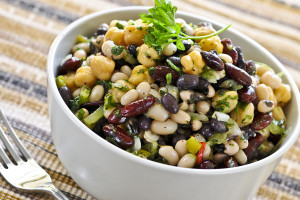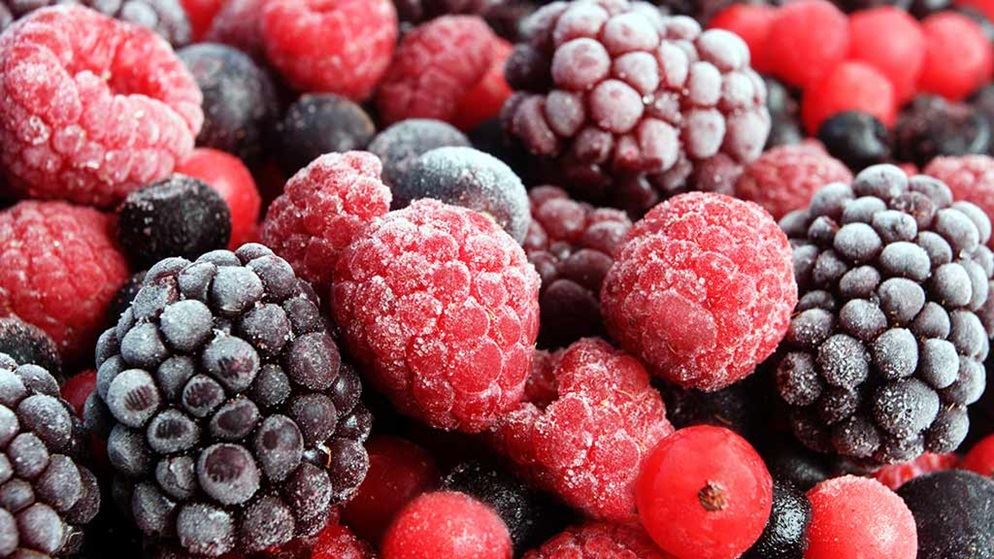Nutrient density refers to level of nutrition per a specific volume of food. Nutrient-dense foods have lots of nutrients, generally with fewer calories. All those superfoods you’ve heard about are nutrient-dense. Energy-dense foods have more calories for the volume of food and generally fewer nutrients.
How Nutrient Density Works
You’re hungry, and it’s a few hours until dinner, so you decide you want a snack.
You can choose either an apple or a glazed donut. They are roughly the same size, and either food works as a quick snack before you get back to work. Which one do you choose?
Hopefully, you chose the apple instead of the donut. The apple has around 80 calories and lots of vitamins, fiber, and phytochemicals.
The fiber in the apple will fill your stomach and keep you satisfied until dinner.
The donut has calories. Lots of calories. In fact, the donut has more than 200 calories, but it doesn’t have many nutrients. There’s only about one gram of fiber — it won’t keep you feeling full either. Eating a sugary donut can easily lead to eating a second one, and possibly a third. Sure it tastes good, but your body might pay quite a price later, for this immediate gratification.
Compare nutrient density using the number of calories in the food by weight or volume, or use portion size. For example, compare a cup of carrot slices to four saltine crackers. Both snacks have about 50 calories, but the carrots have many more nutrients for the same number of calories.
The carrots are nutrient dense; the crackers are energy-dense.
Understanding nutrient density is is important for people on weight-loss diets. Foods that are low in calories, but high in fiber and other vitamins, can help you lose weight.
 Nutrient-Dense Superfoods
Nutrient-Dense Superfoods
Brightly colored fruits and vegetables are big winners in nutrient density. That’s one reason so many fruits and vegetables qualify as superfoods. Carrots, tomatoes, broccoli, kale, spinach, berries, apples, cherries, pomegranate and oranges are all superfoods. Other nutrient-dense superfoods include salmon, tuna, trout, low-fat dairy products, oatmeal and whole grains, soy, dry beans sand even some fortified foods. On the other hand, energy-dense, nutrient poor foods include things that are high in sugar and fat such as refined white bread, pasta, pastries, processed lunch meats and cheeses, ice cream, candy, soda, potato chips and corn chips. In other words, junk food.
Choosing nutrient-dense superfoods at the grocery store is pretty easy if you stay along the edges of the store, where the produce, fresh lean meats, low-fat dairy and fresh bakery goods are found. These fresh foods may be more expensive than the energy-dense packaged foods, but you buy more nutrition for that price.
Most shoppers choose some packaged foods for convenience, but you can still make smart choices with those products — just read the labels. You’ll find the Nutrition Facts labels on the backs or sides of the packages. Look at the serving sizes, note the number of calories per serving and see the amount of fiber, vitamins, calcium and iron.
The packaged food that has the better combination of lower calories, more nutrients, and less sodium is the winner.
Eating nutrient-dense food will ensure you are getting the nutrients and won’t leave you feeling hungry later. Choosing nutrient dense foods can become a habit. Once you understand which foods are more nutrient dense, the rest is easy. Just remember that the foods you eat can affect your health in a big way. To be healthy or unhealthy? The choice is yours.
When Would I Want Energy-Dense Foods?
People who are underweight need some energy-dense foods to make sure they are getting enough calories to gain weight. Nutrient-dense and energy-dense foods include foods like peanut butter, dried fruits, starchy vegetables, and cheese.


Comments are closed